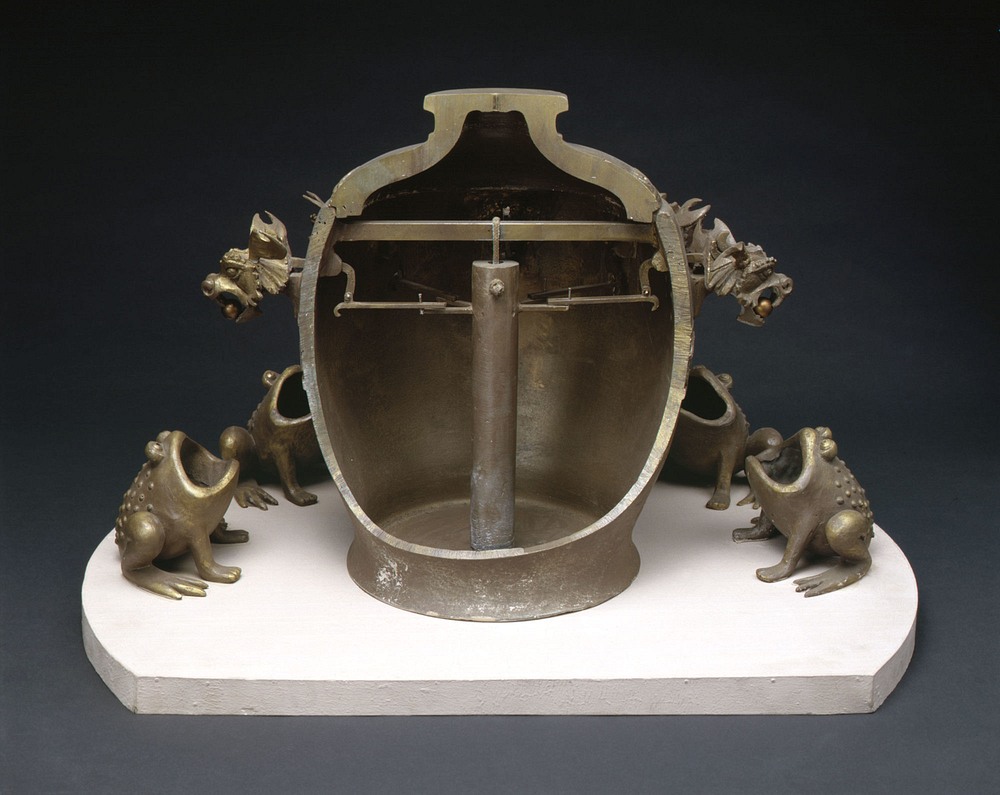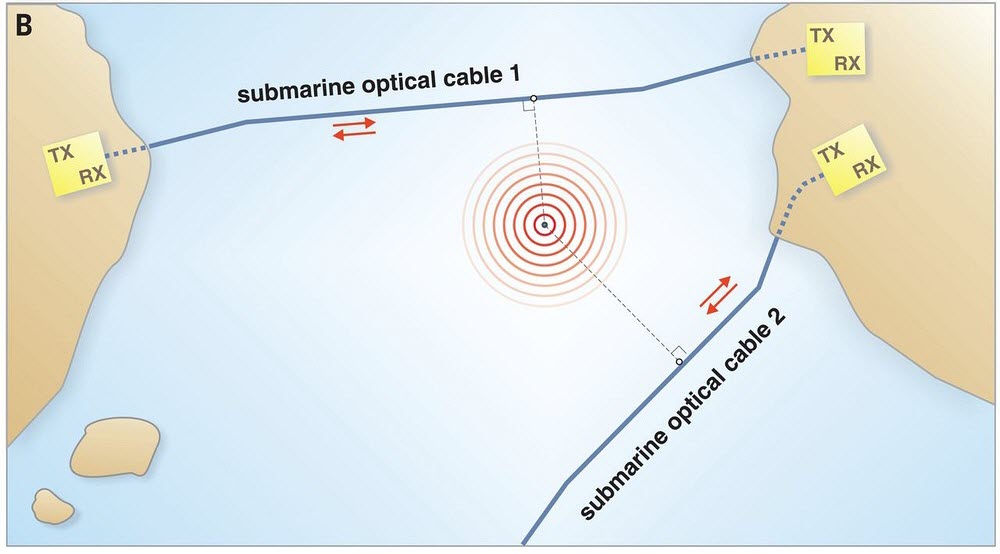In the year 132 CE, a brilliant Chinese astronomer, mathematician and engineer named Zhang Heng presented to the Han court an impressive invention—the world’s first seismoscope.
A seismoscope is an instrument that indicates the shaking of the earth during an earthquake. It should not be confused with a seismometer or a seismograph that also records the movement. In essence, any hanging pendulum or a delicately balanced object that can topple at the slightest disturbance will function as a seismoscope. It’s naïve to believe that such instruments didn’t exist before Zhang Heng’s invention. But what makes Heng’s seismoscope special is its sensitivity and its ability to tell the direction where the earthquake came from.

A replica of Zhang Heng’s seismoscope. Photo credit: Encyclopaedia Britannica
Zhang Heng’s instrument resembled a large wine jar, made of bronze and about six feet in diameter. On the outside of the vessel there were eight dragon-heads, facing the eight principal directions of the compass. Positioned beneath the dragon heads, on the base of the vessel, were eight frogs with their mouths open and heads tilted up. The contents of the jar is unknown, but it is suspected to contain some kind of a pendulum mechanism.
When an earthquake struck, even if it was too weak to be felt, the pendulum would swing with the shaking ground and knock a metal ball out of the dragon’s mouth and into that of the frog’s. The direction from which the ball dropped indicated from whence the tremors came. The falling ball also made a loud noise as it landed on the frog’s mouth, alerting any attendant to the earthquake.
Zhang Heng called his invention Houfeng Didong Yi, or “earthquake weathervane.”
Zhang Heng was initially met with skepticism, but as the story goes, several years later, a ball finally dropped. Because no one felt any shaking in the capital, his critics wrote the instrument off as a failure. But days later, a messenger arrived to report a serious earthquake that originated hundreds of miles away in the exact direction the seismoscope indicated.

Photo credit: Science & Society Picture Library via Endgadget.

A possible mechanism of the seismoscope. Photo credit: Science & Society Picture Library via Endgadget.
In the centuries after Zhang Heng’s death, other Chinese intellectuals were said to have successfully recreated Zhang Heng’s seismoscope, but not a single working instrument have survived the passage of time. Contemporary writers have described the nature of the instrument, but the inner workings of it is a mystery. For instance, it remains unclear how an ancient pendulum design could be so sensitive as to detect earthquakes hundreds of miles away, yet stable enough to disturb only one set of levers without touching the rest.
Attempts to build Zhang Heng’s seismoscope was made in the 19th and 20th centuries but these replicas have failed to reach the level of accuracy and sensitivity described in Chinese historical records. As recently as 2005, a group of seismologists and archaeologists from the Chinese Academy of Sciences announced they had created a functioning replica.
In their version, the researchers used only one ball, instead of eight separate ones for the eight cardinal directions. This ball was delicately balanced atop of a thin pedestal at the center of the instrument. Directly above the ball was a suspended pendulum lightly touching the ball. When the pendulum swung, it gently nudged the ball from its pedestal and down one of the eight channels and out of the dragon’s mouth. That way, the instrument could be triggered only once and subsequent motion of the pendulum would be unable to knock other balls out of the other mouths simply because there aren’t any more balls.
Zhang Heng’s seismoscope might be 1,800 years old, but the working principle behind it has remained essentially unchanged till modern times. Pendulum-based seismometers were used until the 19th century. Modern seismograph uses sophisticated electronics, but the sensor is still a suspended mass, a sort of pendulum, held by electrical forces instead of mechanical levers and rods. Some instruments use springs instead of pendulums.

Between 2016 and 2017, a team of researchers demonstrated that it’s possible to detect earthquakes using ordinary submarine telecommunication cables by measuring the fluctuations in the phase of the transmitted light pulses induced by the seismic event. In contrast to seismometers that are located at a single point in space and thus measure only one set of seismic waves, optical fibers are subjected to seismic disturbances over their entire length, which allows researchers to extract valuable information about the earthquake that might not be possible with a seismometer. Installing seismometers on the ocean floor is difficult and expensive, but there are already thousands of kilometers of submarine cables carrying internet and voice data around the globe. By utilizing this existing infrastructure, it might be possible to implement a global seismic network at very little cost.



Comments
Post a Comment